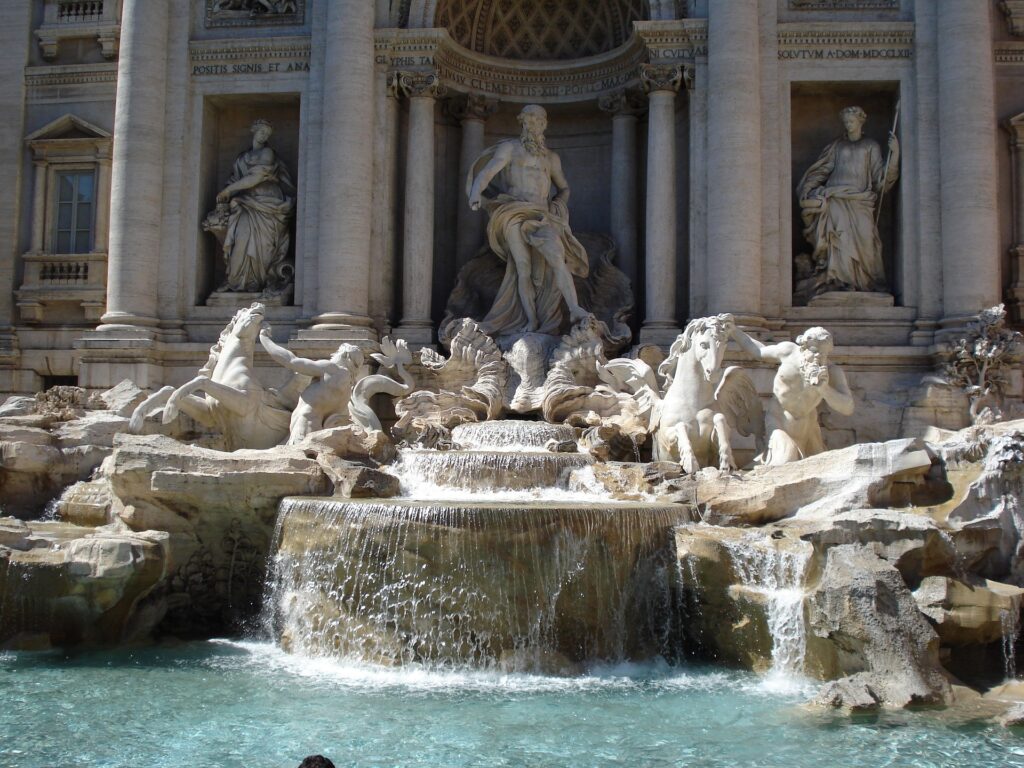
The Trevi Fountain, located in the heart of Rome, Italy, is one of the city’s most iconic landmarks. Designed by architect Nicola Salvi and completed in the 18th century, the fountain features intricate sculptures depicting mythological figures and sea creatures. Visitors flock to the Trevi Fountain to toss a coin over their shoulder and make a wish, following the tradition believed to ensure a return to Rome.
Where is Trevi Fountain?
The Trevi Fountain is located in the historic center of Rome, Italy. Specifically, it stands in the Trevi district, near the Quirinal Palace and the Pantheon.
10 Key Facts about Trevi Fountain
- Baroque Masterpiece: The Trevi Fountain is a Baroque fountain located in the heart of Rome, Italy.
- Nicola Salvi: Designed by Italian architect Nicola Salvi, the fountain was completed in 1762, following several decades of construction.
- Mythological Themes: The fountain’s design features intricate sculptures depicting various mythological figures, including Neptune, Tritons, and sea horses.
- Palazzo Poli: The fountain is situated in front of the Palazzo Poli, providing a stunning backdrop for its grandeur.
- Aqueduct Source: The water flowing into the fountain comes from the ancient Aqua Virgo aqueduct, which dates back to ancient Rome.
- Coin Tradition: Visitors to the Trevi Fountain traditionally toss a coin over their shoulder into the water, symbolizing their wish to return to Rome.
- Restoration Projects: The fountain has undergone several restoration projects over the years to preserve its beauty and structural integrity.
- Movie Fame: The Trevi Fountain has been featured in numerous films, most notably in Federico Fellini’s “La Dolce Vita.”
- Tourist Attraction: The fountain is one of Rome’s most popular tourist attractions, drawing millions of visitors each year.
- Cultural Symbol: As an iconic symbol of Rome and Baroque art, the Trevi Fountain holds significant cultural and historical importance, embodying the city’s rich heritage and artistic legacy.



